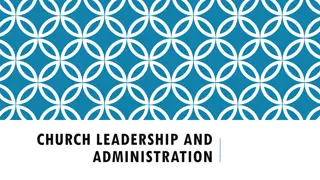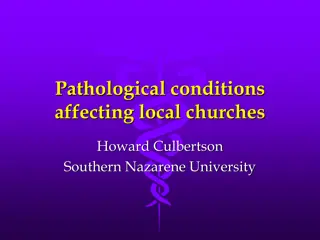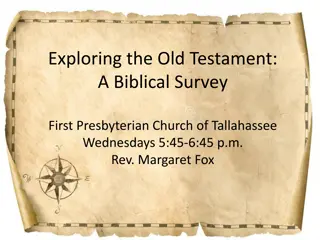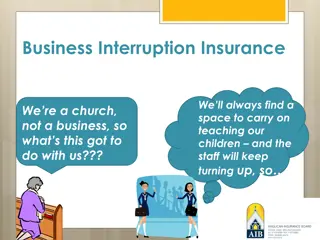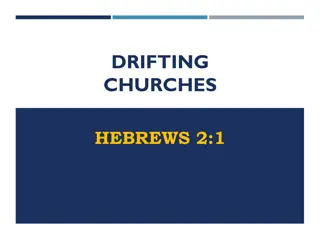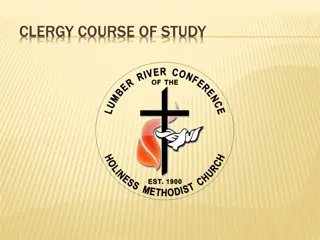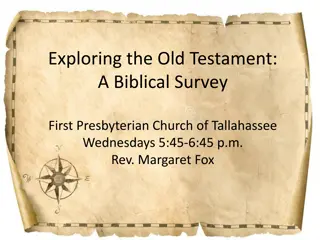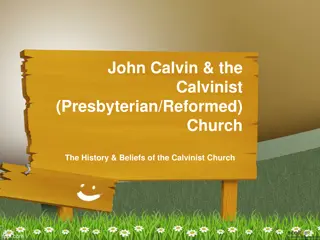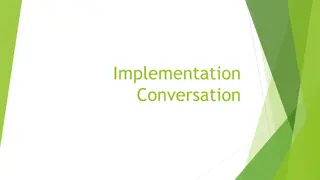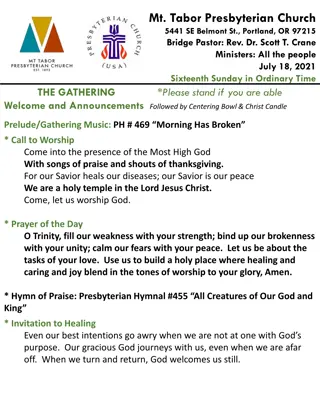Empowering Leadership in Presbyterian Churches
Rethink Presbyterian governance to optimize mission success. Clarity is key. Focus on 5 irreducible questions: What, Why, How, When, and Where. Consider a governance model that balances responsibility, authority, and accountability. Shift towards empowering pastors and elders to drive mission forward.
Download Presentation

Please find below an Image/Link to download the presentation.
The content on the website is provided AS IS for your information and personal use only. It may not be sold, licensed, or shared on other websites without obtaining consent from the author.If you encounter any issues during the download, it is possible that the publisher has removed the file from their server.
You are allowed to download the files provided on this website for personal or commercial use, subject to the condition that they are used lawfully. All files are the property of their respective owners.
The content on the website is provided AS IS for your information and personal use only. It may not be sold, licensed, or shared on other websites without obtaining consent from the author.
E N D
Presentation Transcript
Presbyterian Governance We need to rethink how we use Presbyterian governance in a way that optimizes success in our mission. Is there a better leadership design for this time in our church?
But first, clarity. Clarity isn t the only thing, but it changes everything. Most churches are unclear on what they are ultimately doing. Most churches are unclear on where they are going.
5 Irreducible Questions 1. What are we doing? Our missional mandate. 2. Why are we doing it? Our missional motives. 3. How are we doing it? Our missional map. 4. When are we successful? Our missional marks. 5. Where is God taking us? Our missional mountaintop/milestones.
Vision Frame Source: Church Unique
Leading in Mission Things to consider: We don t see a particular governance style adopted by Jesus in the Scriptures. Most governance structures are in place to maintain the organization, not advance the mission. Today s structures reflect a lack of trust and high control.
Leading in Mission In any governance model that works, there must be a good balance of responsibility, authority and accountability.
Leading in Mission Responsibility: Clearly stated. Understood by all. Agreed by all.
Leading in Mission Authority: Clear who has what. Clear what is permitted. Clear what isn t permitted.
Leading in Mission Accountability: Clear to whom each person is accountable to. Clear to what each person is accountable to.
Leading in Mission The model introduced today will: Make the pastor the key driver of mission. Move the elders from management to governance. Free the elders to then also help advance the mission.
Leading in Mission Key points: Pastor leads. Pastoral staff oversees and equips. Session governs by policies NOT permission.
Leading in Mission Pastor leads: Sets goals related to the mission. Pours into staff and elders. Reviews staff goals and performance. Key in selecting the right staff.
Leading in Mission Staff: Sets goals and report to pastor. Pastor equips them to lead. Are also equipping others in the congregation.
Leading in Mission Session: Makes policies. Holds pastor accountable. Speaks with one voice through the policies. Alters policies as needed. Fiduciary responsibilities. Empower and resource the pastor.
Leading in Mission Session (continued): Participate in long range planning. Develops leaders and future elders. Help pastor cast vision. Stand up to the detractors. Ensure that the mission is funded.
Leading in Mission Policies are written for 3 categories: Mission Outcomes o Categories in which annual goals are established. Boundary Policies o The pastor shall not Accountability Policies o Session/Pastor relationship and processes. See Guiding Principles document
Leading in Mission Session Meetings: Clerk and Pastor set the agenda. Consent agenda. Pastor spends time on leadership development. Pastor updates on goals. Pray for the congregation and mission. Select staff report on goals.
Leading in Mission Paradigm Shifts: No need for committee structures. Elders now can focus on discipleship and leader development. Staff does all of the managing instead of elders. Pastor as CEO is actually a good thing.
Leading in Mission Questions?




